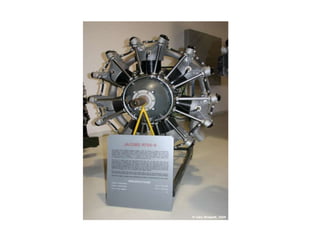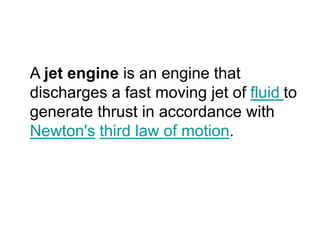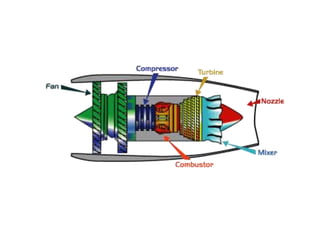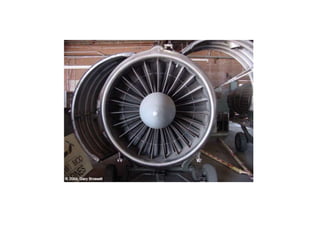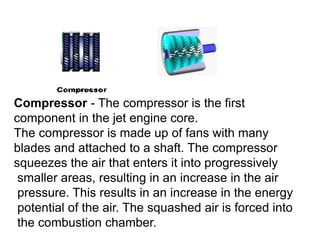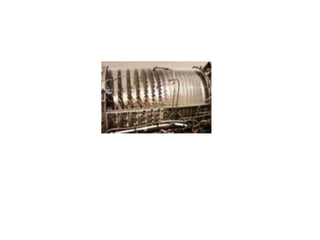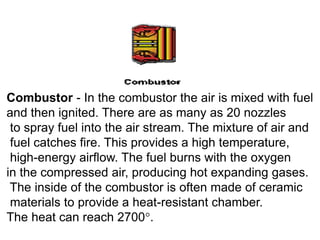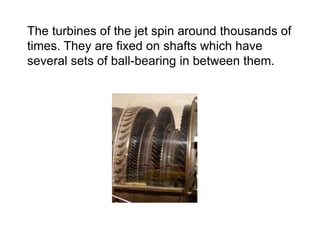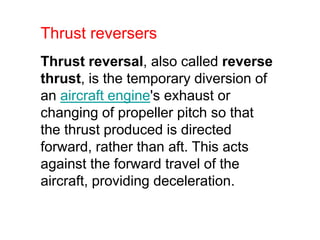Jet engines work by compressing air, mixing it with fuel, igniting it to produce hot exhaust gases, and channeling the exhaust out of a nozzle. The major components are the air intake, compressors, combustors, turbines, and nozzle. The compressed air and fuel burn in the combustor, driving turbines which power the compressors and fan. The high-energy exhaust exits through the nozzle, producing thrust that propels the aircraft forward. Advanced jet engines also include components like turbo pumps, afterburners, and thrust reversers.





